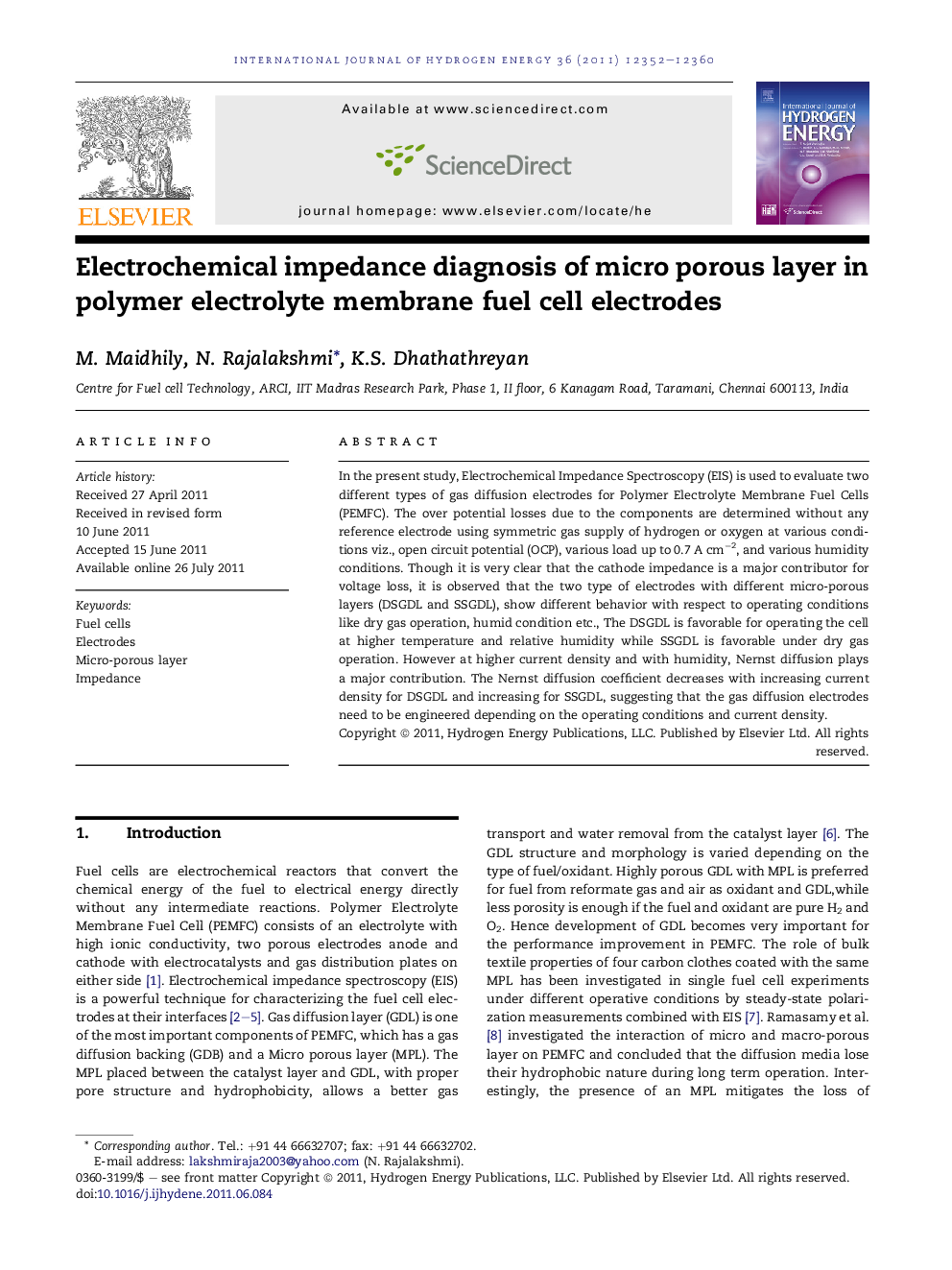| Article ID | Journal | Published Year | Pages | File Type |
|---|---|---|---|---|
| 1282439 | International Journal of Hydrogen Energy | 2011 | 9 Pages |
In the present study, Electrochemical Impedance Spectroscopy (EIS) is used to evaluate two different types of gas diffusion electrodes for Polymer Electrolyte Membrane Fuel Cells (PEMFC). The over potential losses due to the components are determined without any reference electrode using symmetric gas supply of hydrogen or oxygen at various conditions viz., open circuit potential (OCP), various load up to 0.7 A cm−2, and various humidity conditions. Though it is very clear that the cathode impedance is a major contributor for voltage loss, it is observed that the two type of electrodes with different micro-porous layers (DSGDL and SSGDL), show different behavior with respect to operating conditions like dry gas operation, humid condition etc., The DSGDL is favorable for operating the cell at higher temperature and relative humidity while SSGDL is favorable under dry gas operation. However at higher current density and with humidity, Nernst diffusion plays a major contribution. The Nernst diffusion coefficient decreases with increasing current density for DSGDL and increasing for SSGDL, suggesting that the gas diffusion electrodes need to be engineered depending on the operating conditions and current density.
► Two different types of Gas Diffusion Layers have been evaluated in this work. ► Electrochemical Impedance Spectroscopy technique is used as the diagnostic tool. ► Equivalent circuit modeling has been carried out to obtain the resistance values. ► Cathode loss is high compared to anode and membrane. ► Out of two different types of GDL, SSGDL is favorable to operate under dry condition.
